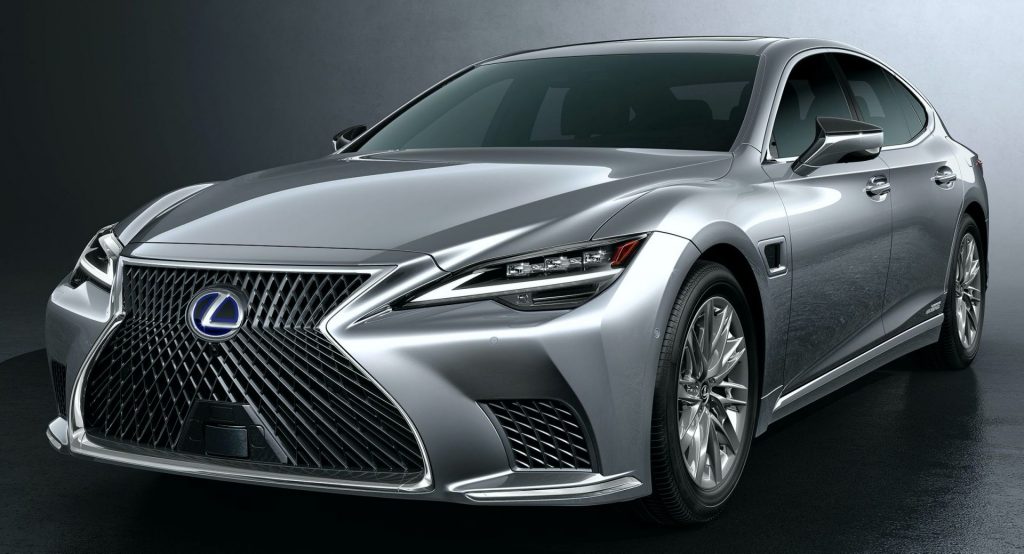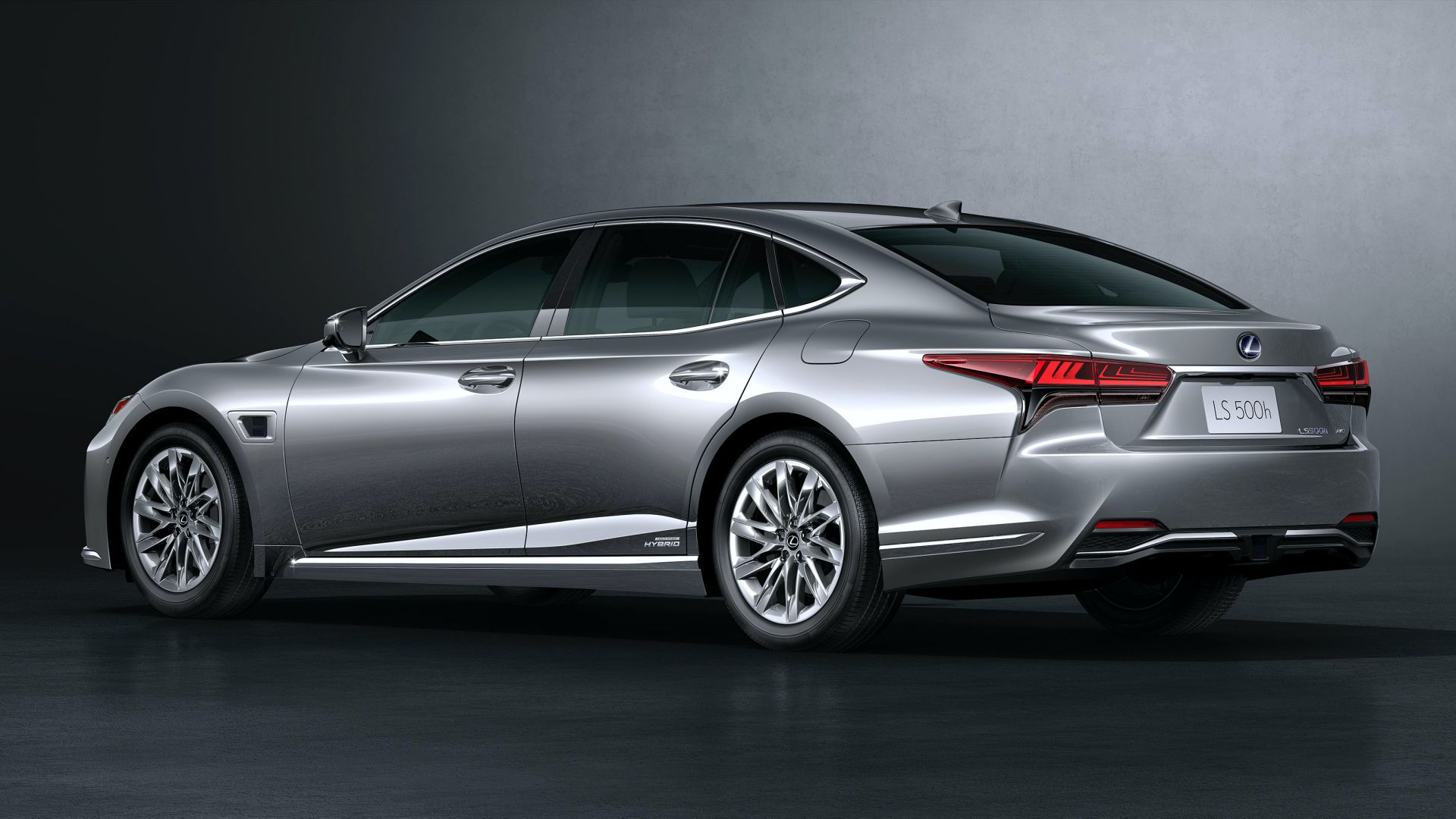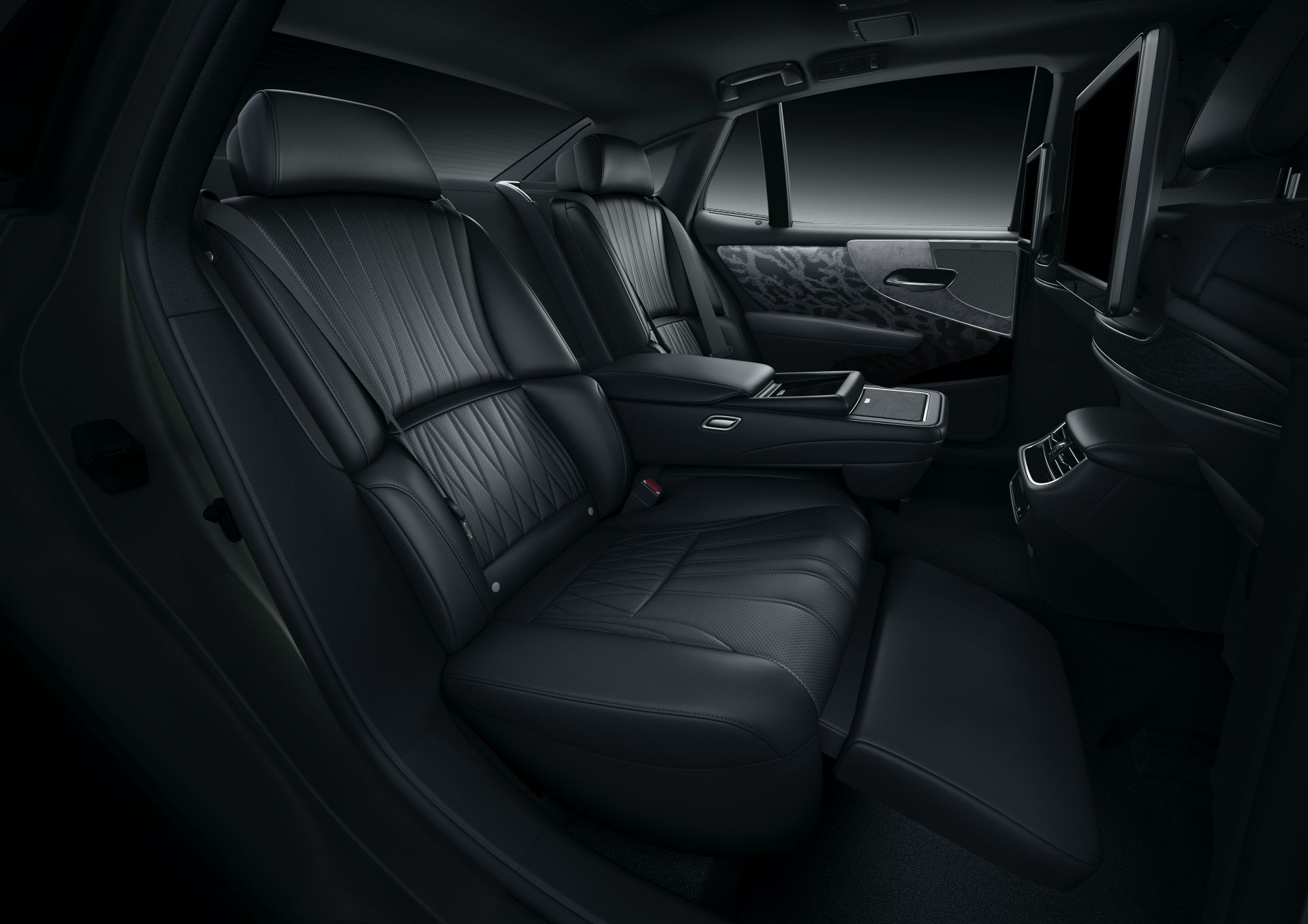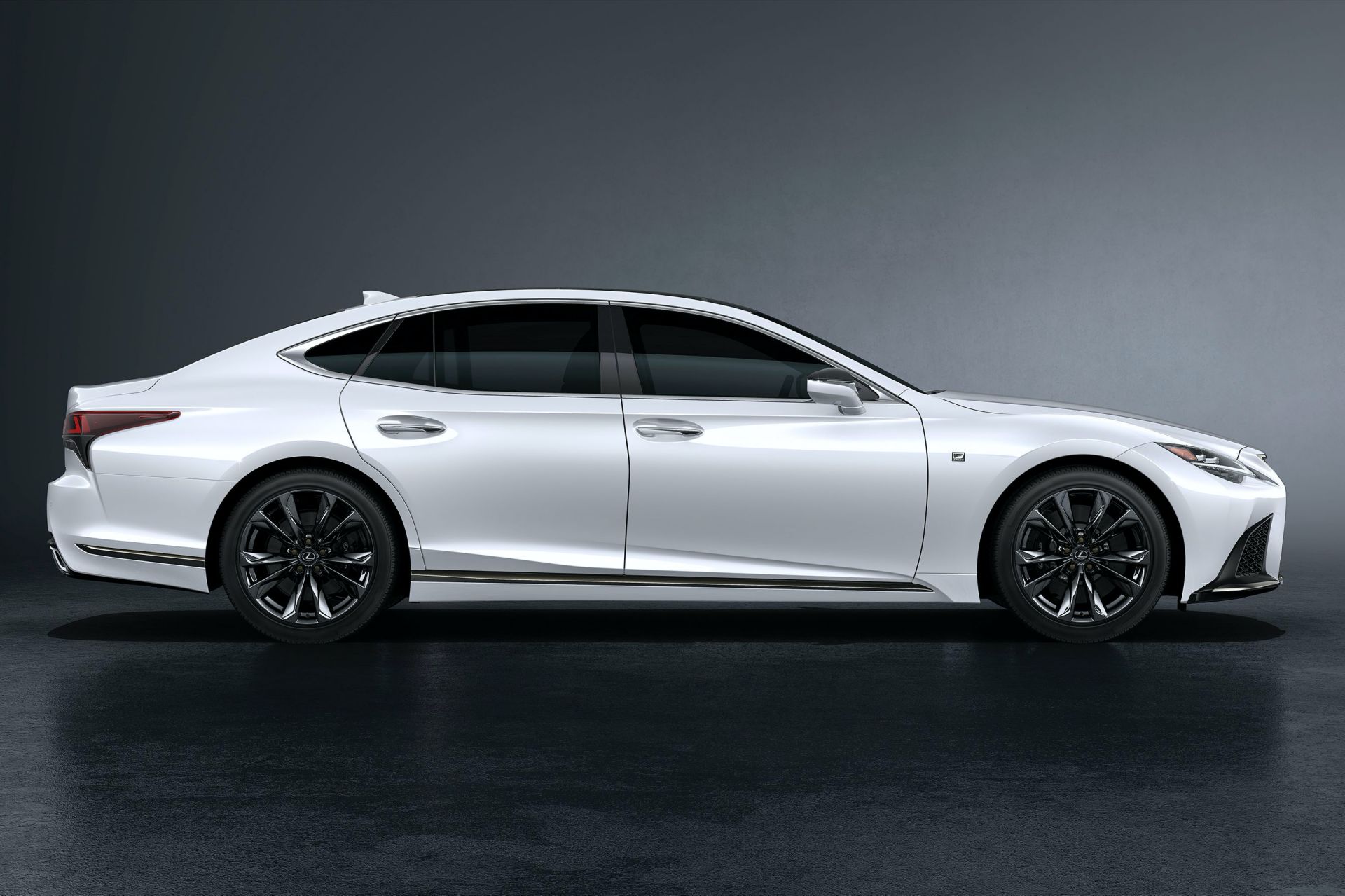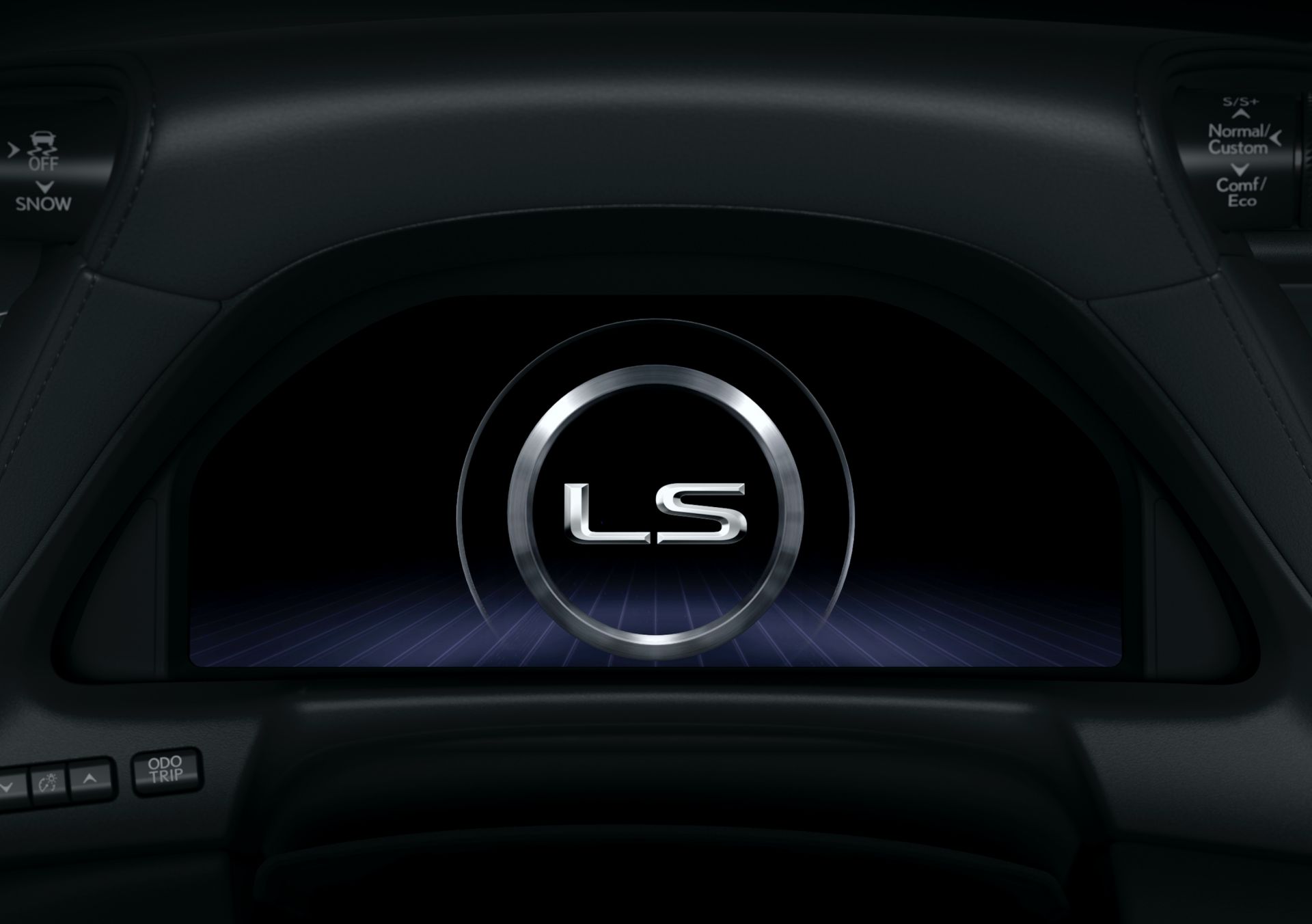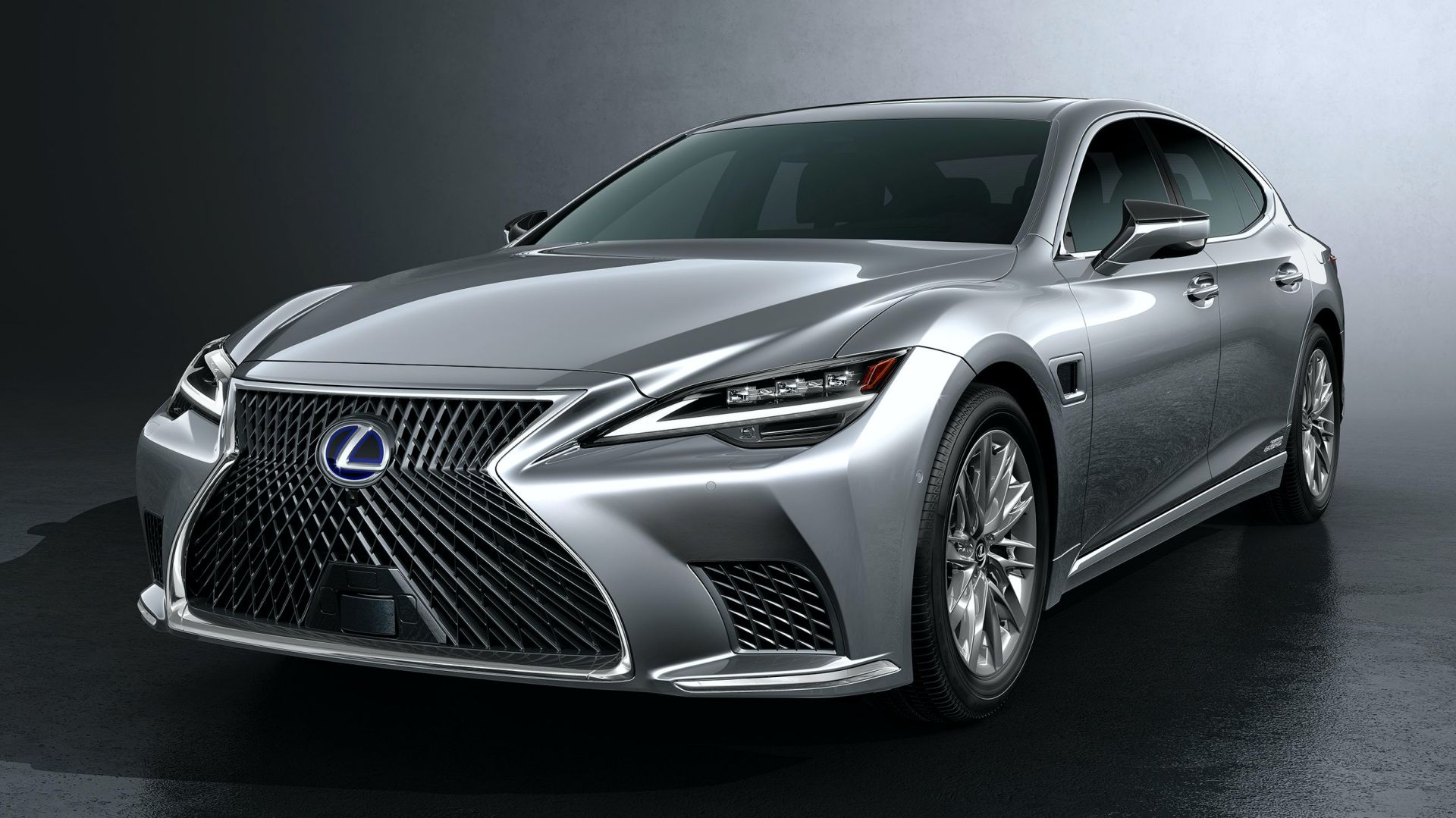Lexus has made the first major update to the fifth-generation LS flagship sedan since its introduction in 2017.
For the mid-cycle refresh, the Lexus LS has adopted a similar styling approach to the recently-unveiled IS. In addition to the exterior and interior updates, engineers focused on elevating the sedan’s levels of comfort, quietness and overall refinement, as well as dynamics.
As far as the design is concerned, the facelifted Lexus LS adopts a new front fascia featuring new three-bulb headlights with a L-shaped DRLs and a refreshed bumper with squarish side intakes and chrome trim on the lower edges. In addition, the color of the grille mesh has been changed to dark metallic.
Read Our Review: 2019 Lexus LS 500 Is Proof You Can Have Style And Substance
The changes are less visible elsewhere, with the rear end looking almost identical with the outgoing model bar from the taillights’ new LED signature and Piano Black trim. Other changes include new 20-inch wheels for the F Sport model, which also gets a dedicated color for the grille.
Speaking of colors, the 2021 Lexus LS gains a new body paint called Gin-ei Luster and applied using the Sonic Method, which condenses the paint volume of paint containing radiant material (aluminum flakes). It features a smooth, mirror-like texture that Lexus says it suits the lines of the car really well.
Changes to the interior are highlighted by a new 12.3-inch wide touchscreen display for the infotainment system that’s compatible with SmartDeviceLink, Apple CarPlay and Android Auto. Controls on the steering wheel and center console are now colored black, while a new switch for the seat heaters and steering wheel heater has been added to the center stack.
When it comes to interior styling, the 2021 LS features a new ‘Nishijin & Haku’ trim combining Nishijin brocade and metal leaf decoration. For improved comfort, the seat coverings feature deeper stitch points while the underlying seat pads feature low-resilience urethane, resulting in softer seating.
While we’re on the subject of comfort, it must be said that Lexus has added a newly-developed Adaptive Variable Suspension solenoid to reduce damping force. At the same time, the vertical spring rate (stiffness) of the run-flat tires and the rigidity of the stabilizer bars provide optimized performance. To reduce vibrations transmitted to the cabin, Lexus has even changed the orifice inside the engine mounts so as to alter damping characteristics.
Efforts have been made to reduce noise inside the 2021 Lexus LS, with both the hybrid version and the gasoline-powered model undergoing Active Noise Control and Engine Sound Enhancement tuning. In the hybrid, quietness has been improved also by lowering maximum engine revolutions during departure acceleration.
The 2021 Lexus LS 500h hybrid also benefits from increased battery assist during acceleration to contribute to strain-free acceleration. As for the LS 500, it boasts improved initial engine torque for greater acceleration response, improved shift timing and a wider acceleration range for each gear. This is said to result in less frequent downshifts.
Another major update for the facelifted Lexus LS is the AI-powered Lexus Teammate advanced driving assist suite. The system will be first introduced in Japan and later on in other markets. The Advanced Drive system supports driving capabilities such as keeping the vehicle in its lane, maintaining vehicle-to-vehicle distance, lane splits, changing lanes, and overtaking other vehicles, when driving on expressways and other motor-vehicle-only roadway.
Advanced Park uses integrated cameras and ultrasonic sensors to park the car automatically. Other new features include a larger digital rearview mirror and BladeScan AHS (Adaptive High-beam System).



